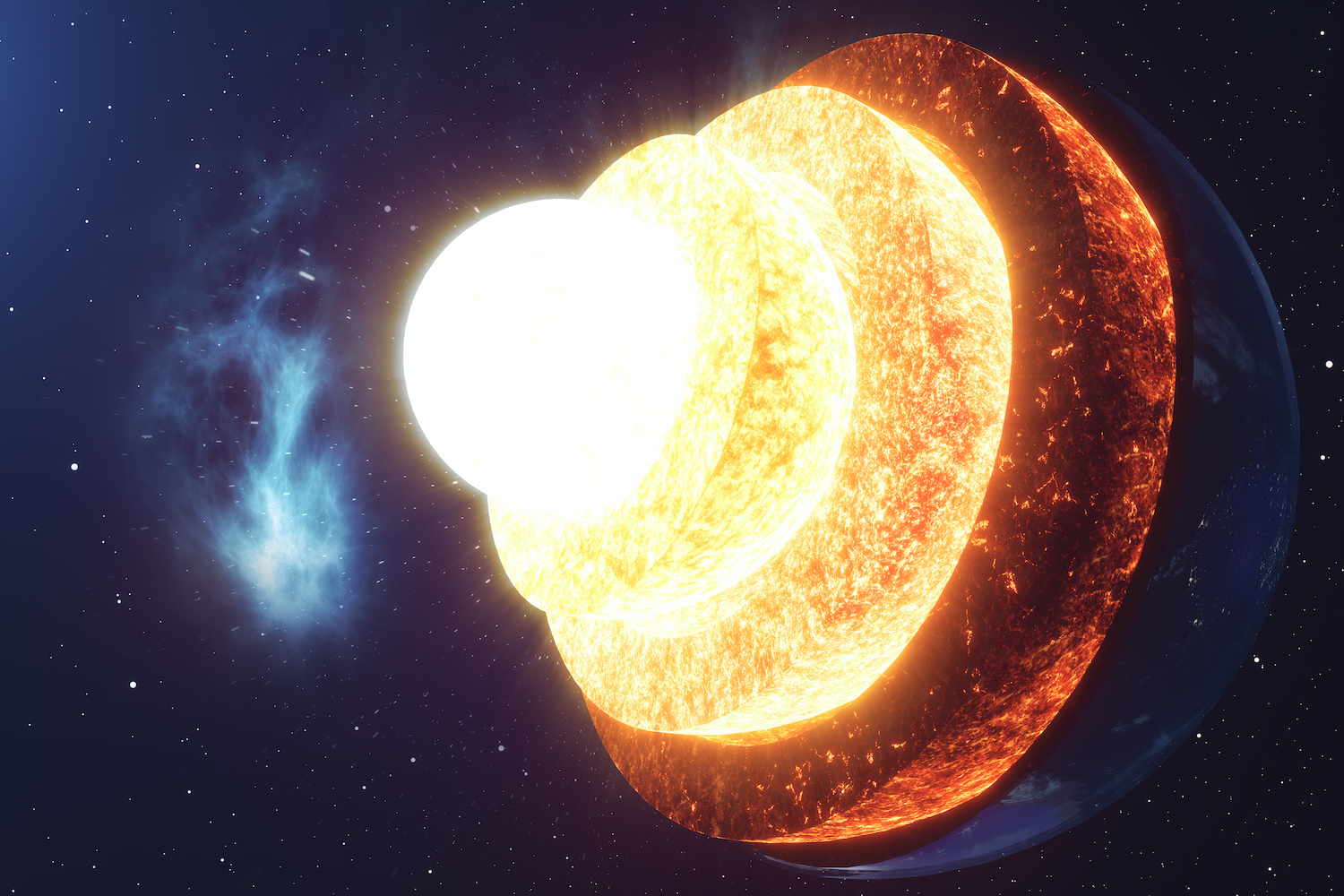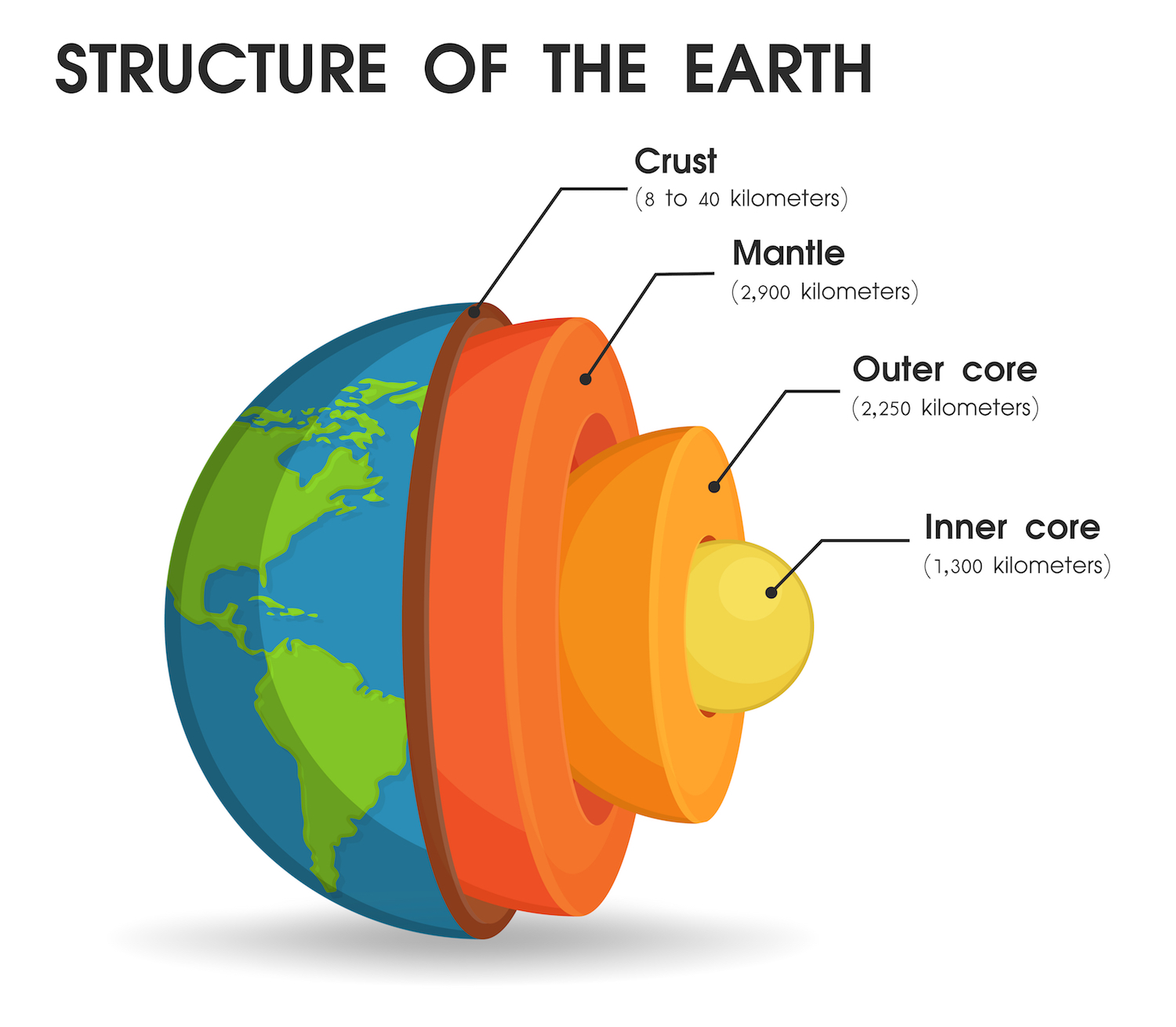Earth's Core Has Been Leaking for 2.5 Billion Years and Geologists Don't Know Why

Earth's scorching core is not a loner — it has been caught mingling with other, underworldly layers. That's according to a new study that found the innermost part of the planet leaks some of its contents into mantle plumes, some of which eventually reach Earth's surface.
This discovery helps settle a debate that's been raging for decades: whether the core and mantle exchange any material, the researchers said.
"Our findings suggest some core material does transfer into the base of these mantle plumes, and the core has been leaking this material for the past 2.5 billion years," the researchers wrote in The Conversation, a website where scientists write about their research for the public. [Photos: The World's Weirdest Geological Formations]
The finding was made possible by the metal tungsten (W), element 74 on the periodic table. If tungsten were to make a dating profile, it would note that it's a siderophile, or "iron lover." So, it's no surprise that a lot of tungsten hangs out in Earth's core, which is made primarily of iron and nickel.
On its profile, tungsten would also list that it has a few isotopes (an element with a different number of neutrons in its nucleus), including W-182 (with 108 neutrons) and W-184 (with 110 neutrons). While devising their study, the researchers realized that these isotopes could help them solve the core-leaking question.
Another element, hafnium (Hf), is a lithophile, meaning it loves rocks and can be found in Earth's silicate-rich mantle. With a half-life of 8.9 million years, hafnium's radioactive isotope Hf-182 decays into W-182. This means that the mantle should have more W-182 than the core does, the scientists reasoned.
"Therefore, chemical exchange between the core and the source of mantle plumes could be detectable in the 182W/184W ratio of ocean island basalts," which come from plumes in the mantle, the researchers wrote in the study.
Get the Space.com Newsletter
Breaking space news, the latest updates on rocket launches, skywatching events and more!
But this difference in tungsten would be incredibly small: The tungsten-182 composition in the mantle and core were expected to differ by only about 200 parts per million (ppm). "Fewer than five laboratories in the world can do this type of analysis," the researchers wrote in The Conversation.

Furthermore, it's not easy to study the core, because it begins at a depth of about 1,800 miles (2,900 kilometers) underground. To put that into perspective, the deepest hole humans have ever dug is the Kola Superdeep Borehole in Russia, which has a depth of about 7.6 miles (12.3 km).
So, the researchers studied the next best thing: rocks that oozed to Earth's surface from the deep mantle at the Pilbara Craton in Western Australia, and the Réunion Island and Kerguelen Archipelago hotspots in the Indian Ocean.
Leak detected
The amount of tungsten in these rocks revealed a leak from the core. Over Earth's lifetime, there was a big change in the W-182-to-W-184 ratio in Earth's mantle, the researchers found. Oddly, Earth's oldest rocks have a higher W-182-to-W-184 ratio than most modern-day rocks do, they discovered.
"The change in the 182W/184W ratio of the mantle indicates that tungsten from the core has been leaking into the mantle for a long time," the researchers wrote in The Conversation. [Photos: Geologists Home-Brew Lava]
Earth is about 4.5 billion years old. The planet's oldest mantle rocks, however, didn't have any significant changes in tungsten isotopes. This suggests that from 4.3 billion to 2.7 billion years ago, there was little or no exchange of material from the core to the upper mantle, the researchers said.
But in the past 2.5 billion years, the tungsten isotope composition in the mantle has changed substantially. Why did this happen? If mantle plumes are rising from the core-mantle boundary, then perhaps, like a see-saw, material from Earth's surface is going down into the deep mantle, the researchers said. This surface material has oxygen in it, an element that can affect tungsten, the researchers said.
"Subduction, the term used for rocks from Earth's surface descending into the mantle, takes oxygen-rich material from the surface into the deep mantle as an integral component of plate tectonics," the researchers wrote in The Conversation. "Experiments show that [an] increase in oxygen concentration at the core-mantle boundary could cause tungsten to separate out of the core and into the mantle."
Or, maybe as the inner core solidified after Earth formed, the oxygen concentration in the outer core increased, the researchers said. "In this case, our new results could tell us something about the evolution of the core, including the origin of Earth's magnetic field," they wrote in The Conversation.
The study was published online June 20 in the journal Geochemical Perspectives Letters.
Join our Space Forums to keep talking space on the latest missions, night sky and more! And if you have a news tip, correction or comment, let us know at: community@space.com.

Laura is an editor at Live Science. She edits Life's Little Mysteries and reports on general science, including archaeology and animals. Her work has appeared in The New York Times, Scholastic, Popular Science and Spectrum, a site on autism research. She has won multiple awards from the Society of Professional Journalists and the Washington Newspaper Publishers Association for her reporting at a weekly newspaper near Seattle. Laura holds a bachelor's degree in English literature and psychology from Washington University in St. Louis and an advanced certificate in science writing from NYU.










